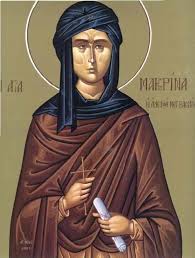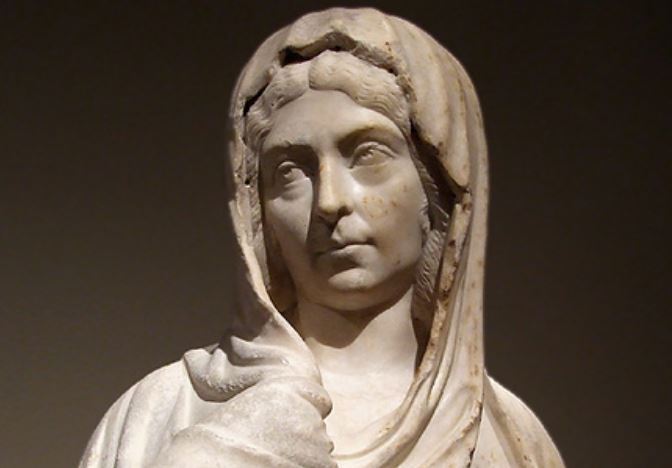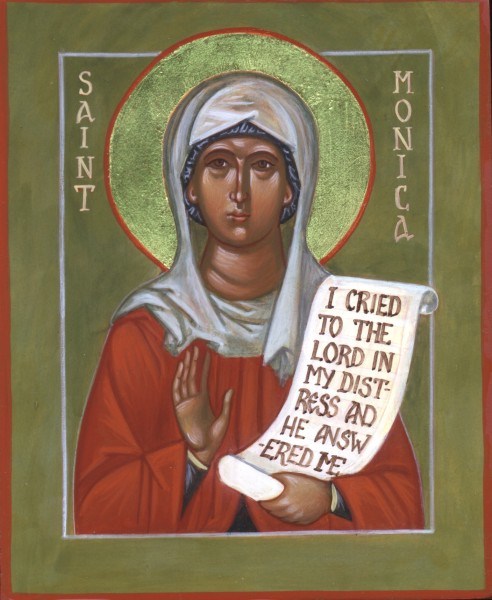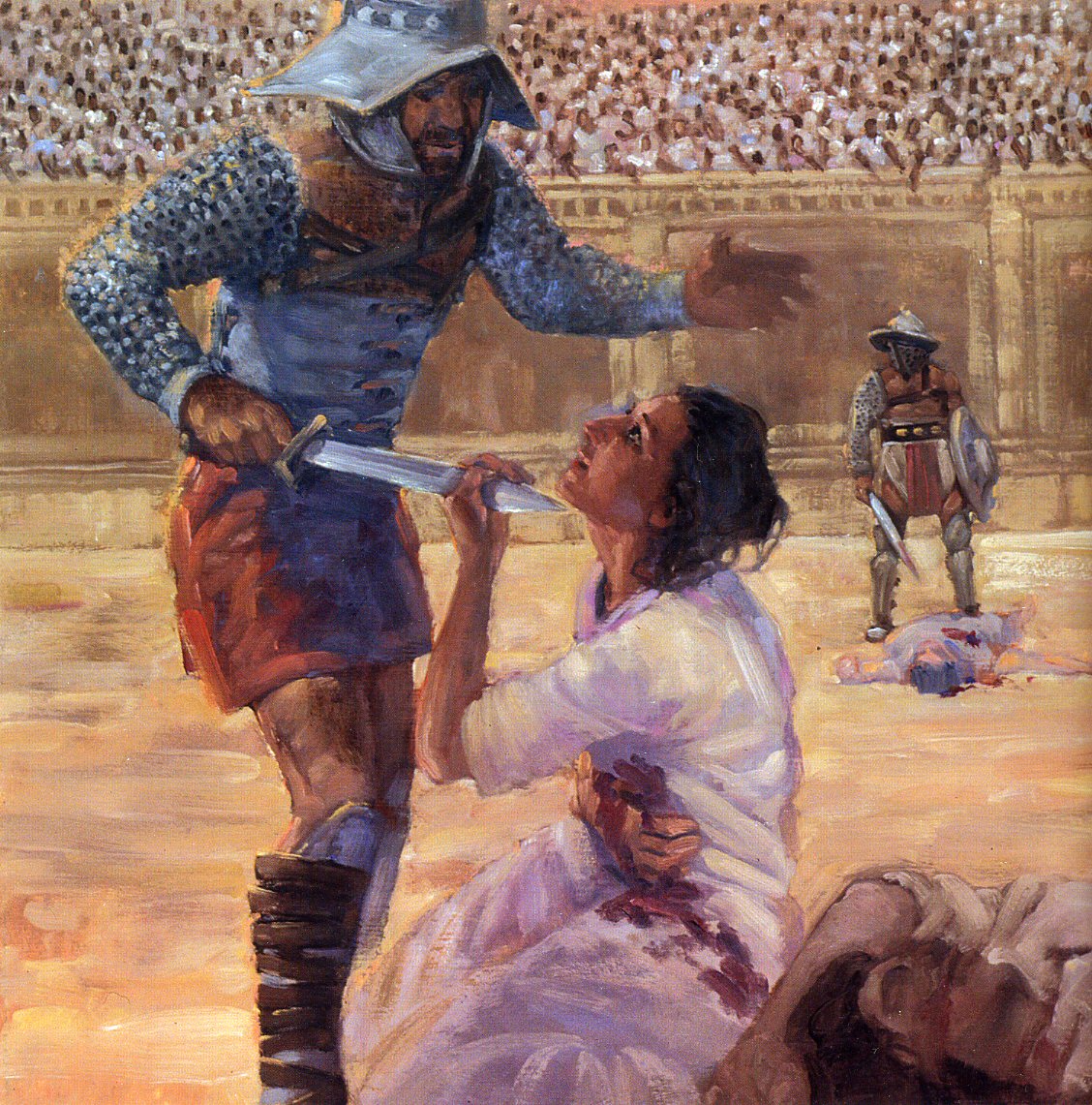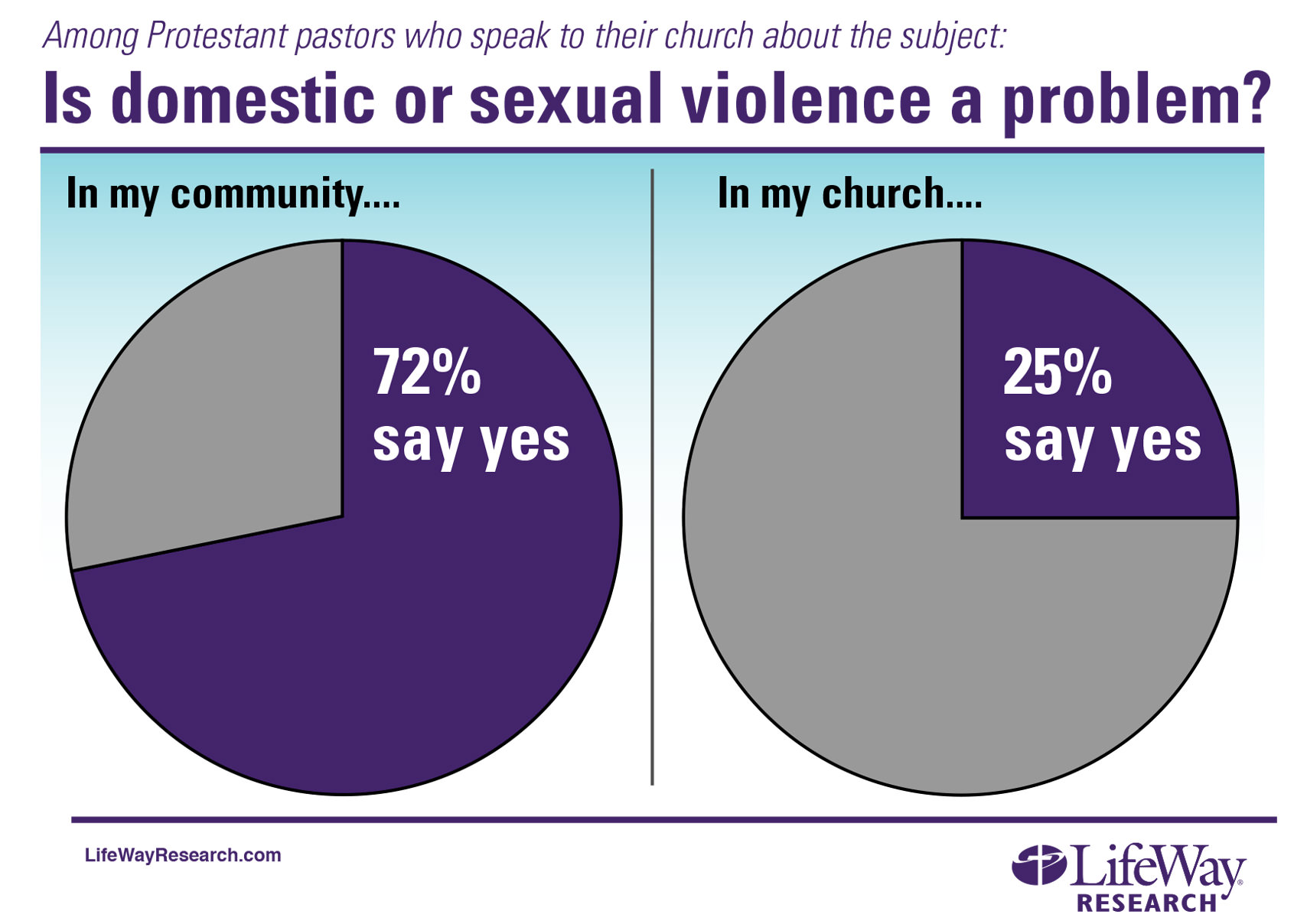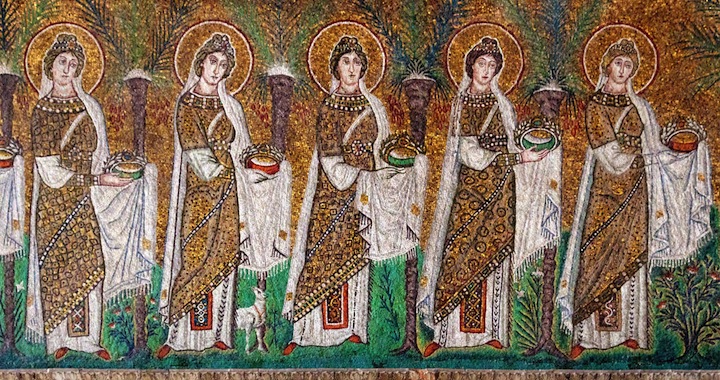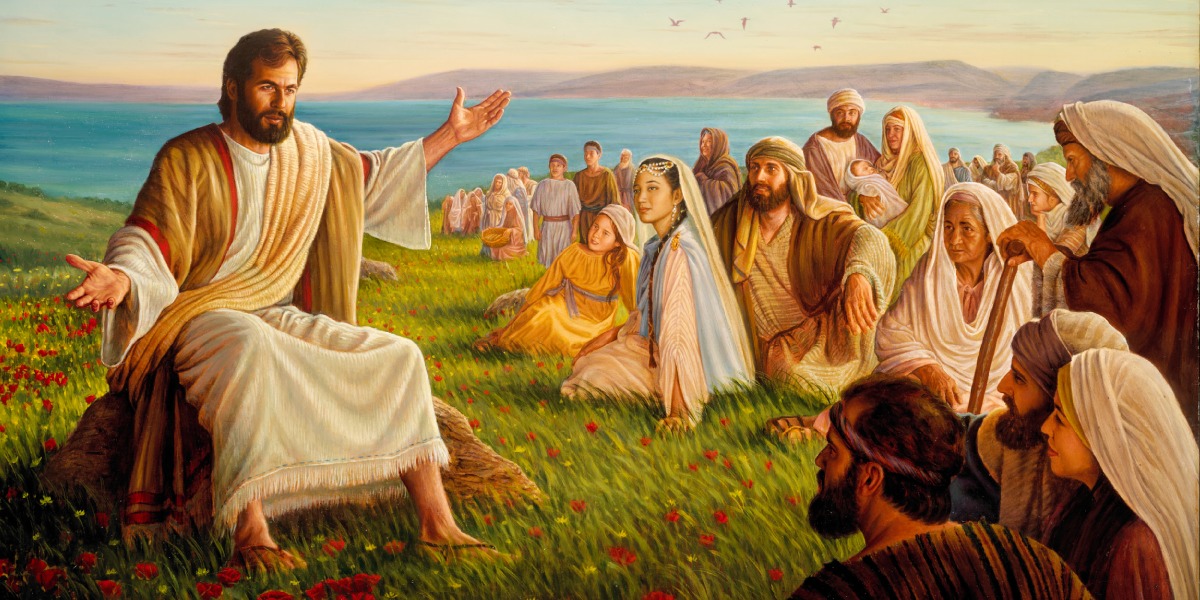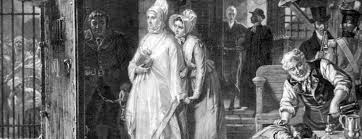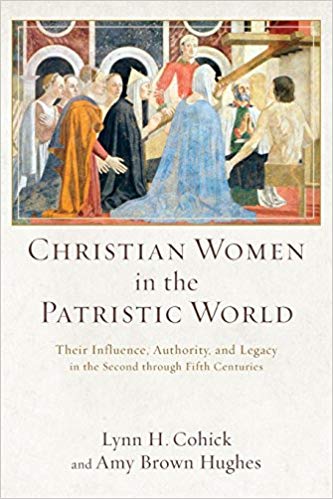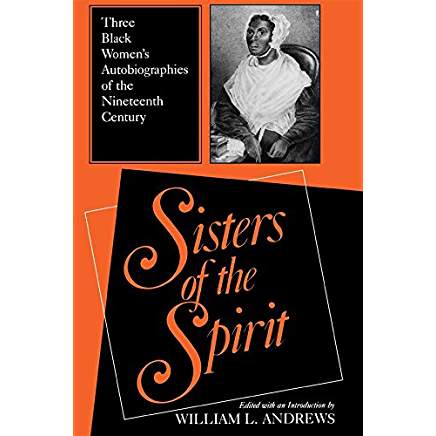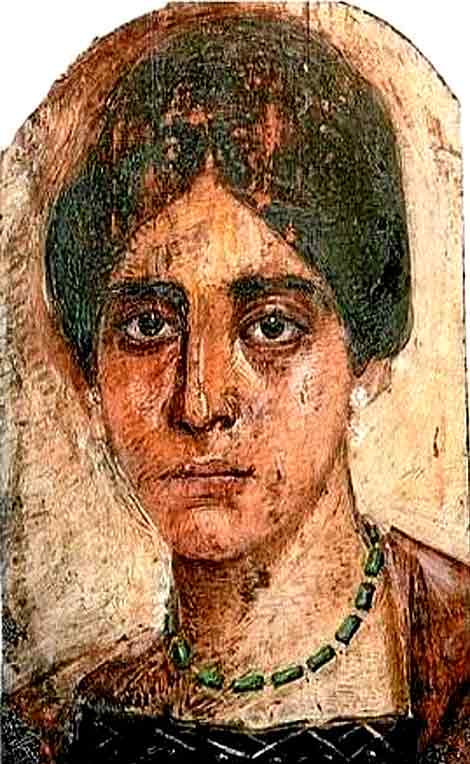
The stories of women have been erased in much of church history. It is not because there have been fewer women in history. Half of the population is female. Male-authored church history books have left women out because patriarchal men believe that women’s stories are irrelevant.
Women have made important contributions to history. For the last few weeks we have concentrated on women who served Christ during the Patristic era. Some of these women were born poor, others renounced great wealth to follow in the steps of Christ. Martyrs, Mothers, Scholars, Theologians, Writers, Disciples, Queens, Empresses, Pilgrims, and Monastery founders are among them. The world would not be the same without the influence of these women. They achieved great things while maintaining lives of piety, fortitude, and courage.
We began this series on Patristic women in our first post with “Thecla – 1st Century Disciple and Missionary”. Thecla’s life was to influence many men and women for the next few centuries, including Egeria the famous fourth century pilgrim in this post.
We continued with the stories of women who gave their lives as martyrs rather than deny their Lord Jesus – Blandina (martyred 177 AD) and Perpetua (martyred 203 AD – along with her servant Felicitas).
We then recounted the stories of two famous Mothers – Helena, the mother of Emperor Constantine and Monica the mother of Augustine. Besides martyrs, and mothers, there were many female Disciples of Christ, such as Marcella of Rome. In our last post we told the stories of two educated, brilliant female scholars during the Patristic Age – Paula and Macrina the Younger.
This week we will look at Pilgrimage as a Christian activity as seen in the life of Egeria. Many men and women would follow in her footsteps as they sought the blessings that came with visiting Christians in other lands.
Egeria (Fourth Century)
Egeria and other pilgrims were influenced by Thecla. They admired Thecla very much and sought to imitate her life. Many men and women chose celibacy as Thecla did so that they could serve Christ with their whole lives (I Corinthians 7:32-35). Many believers also desired to travel to the Holy Land. The difference between Thecla and pilgrims like Egeria, was that Thecla was an itinerant preacher. The pilgrims also wanted to travel to the Holy Land, but their emphasis was on visiting the shrines of people like Thecla. By the late fourth or early fifth centuries they also wanted to visit monasteries and cathedrals and be with other monks and nuns for spiritual edification. They believed that a special blessing came from the places where saints or martyrs lived and/or died. By this time there was also a growing fascination for relics. Going on a pilgrimage and bringing back a relic gave the believer who went on the pilgrimage some special status.
We are especially grateful that Egeria wrote a firsthand account of her pilgrimage in a journal. Her manuscript had been copied and widely circulated by other religious pilgrims during the Patristic age but was then put aside for centuries, forgotten until discovered by an Italian scholar in the late 1800’s. Historians recognized its value and this marvelous account of fourth century Christian life is now available.[1]
To go on a three to four-year journey as Egeria did would have required some financial availability. It is believed that Egeria came from a merchant family. This seems probable because not only would funds have been available, but she would have a network of people across Europe and the Holy Land to help her. While traveling could be risky, it would not have seemed as threatening to Egeria. Many other people were going on pilgrimages. Some had left earlier because Christians were fleeing persecution in Rome. When Constantine ended the persecutions, believers took advantage of the freedom as well as the fine Roman roads and traveled to the Biblical sites.
Egeria’s journey was probably taken around 380 AD. We are not sure why Egeria went on the Pilgrimage since the first part of her diary is lost. Was she traveling on a combined business/spiritual journey? We’ll have to wait until we get to heaven and ask her.
Egeria’s account is in two parts. Part one is the description of the places and people she visited. In Part two Egeria writes about her stay in Jerusalem for a year. The diary tells of the liturgy and practices in the churches. Among others, Egeria visited the Church of the Nativity in Bethlehem, the Holy Sepulchre, and the Mount of Olives.
Egeria wrote this account for her “sisters”. It is unclear if the women were her biological sisters, spiritual sisters, or nuns. The term “sisters” was already in use for Christian women who were close companions. In any event, Egeria wanted her “sisters” who couldn’t also travel to share in the excitement and beauty of the places that she visited so she wrote in picturesque detail about her journeys.
Thanks to the details in her work we know a lot about the development of monasteries during that time. We also get a picture of the growing veneration of the saints. Egeria describes the churches she visited and the rituals that were performed there. She said, “Whenever we were empowered to reach our destination, it was always our custom first to say a prayer, then to read a passage from the Bible, sing a Psalm fitting the occasion, and finally say a second prayer.”[2]
Egeria’s journey was typical of the fourth century pilgrims. She visited Old Testament and New Testament sites. One such site was Clysma, where it is thought that the Israelites crossed the Red Sea in the exodus. From there she would have gone to Mount Sinai. She was especially enthralled with the place where Moses prayed, prophesied and died.
The highlight for most travelers was Jerusalem. Egeria went there but she also went to other places such as Mount Nebo and Job’s tomb. In the company of several holy men Egeria went to Arabia.
During her journey Egeria wanted to stand in the places where God’s saints had stood. She sought out the places where Melchizedek lived, the cave of the prophet Elijah, the abode of Jephthah, and the place where Elijah stayed during the famine when he received food from a crow and water from a stream. Egeria sought to combine the special feeling of “being there” with a chance to go deeper into the stories of the Bible. She related the connection between the places that she visited and their significance in the Bible for her readers in her journal.
In her writings she emphasized the lives of the holy men and women at the various sites. Pilgrims were common in her day and Egeria enjoyed fellowship with many during her travels. There were so many pilgrims that Christian networks were developing. At St. Thecla’s shrine Egeria enjoyed meeting up with a deaconess named Marthana, whom she had met earlier in Jerusalem. Pilgrims were invited to worship in Thecla’s church, and to read the Acts of Theclaout loud together. This gave the Christians a bond. They could share Scripture, prayer and stories of their journeys.
Egeria’s diary is important for church history. Egeria was the first to develop a style of writing for pilgrims that would influence scholars into the medieval period and beyond. Her diary is a primary source for Christian life in the fourth century. The fact that Egeria’s “sisters” were eager to read her story and learn about the Bible, geography, and culture from her writings demonstrates clearly that women were educated in the fourth century. We have seen in our previous story about Paula that women formed study circles as did the men. Clearly in the Early Church period, Christian history was being made by women like Egeria. Thankfully, more and more manuscripts are being discovered each year containing the writings of these called and gifted servants of God.
[1]You can read a translation of Egeria’s Travels at: http://www.ccel.org/m/mcclure/etheria/etheria.htm
[2]In a translation by George E. Gingras. Egeria: Diary of a Pilgrimage. ACW 38. New York: Newman, 1970. page 66.
